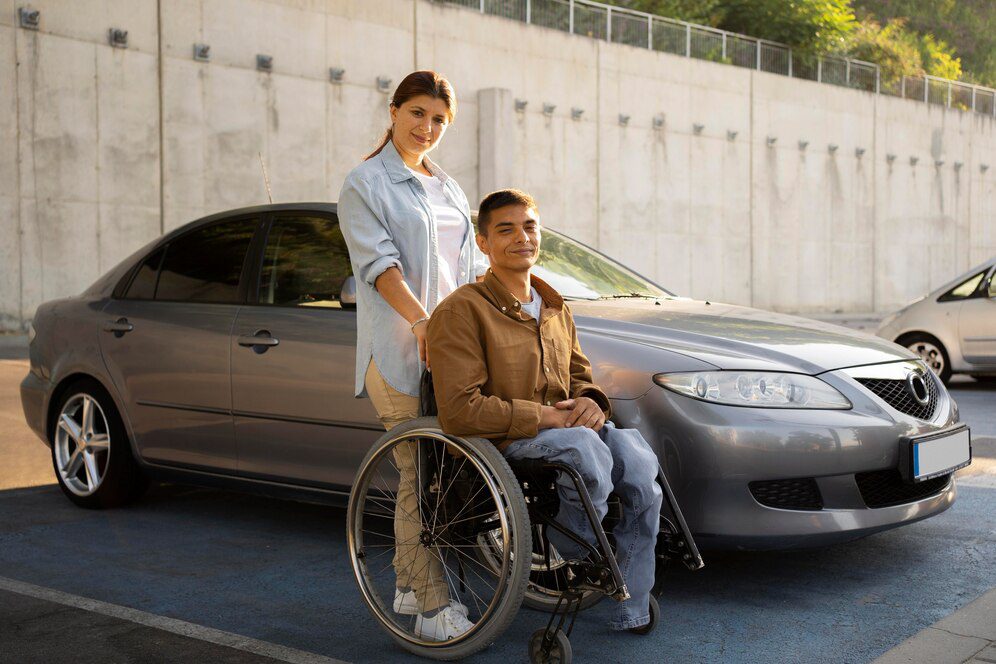Choosing the right mobility aid depends on your specific needs, lifestyle, and the level of mobility you have. Here’s a guide to help you make an informed decision based on different types of mobility aids commonly used in Australia:

1. Walkers
- Best For: Individuals who need support for balance but can still walk independently for short distances.
- Features: Walkers usually have four legs, which provide stability. Some models come with wheels, while others are non-wheeled for greater control.
- Pros: Provides sturdy support, especially for those who have difficulty with balance.
- Considerations: May be difficult to manoeuvre in tight spaces or on uneven terrain.
2. Walking Frames
- Best For: People who need extra support for walking but still have the ability to move independently.
- Features: Often lightweight and simple, walking frames are designed to provide stability while walking.
- Pros: Good for indoor use, lightweight and easy to fold.
- Considerations: Not as easy to use outdoors or on uneven surfaces.
3. Wheelchairs
- Best For: Individuals who cannot walk or have limited walking ability.
- Features: Available in manual or powered versions, with various sizes and customisable features like reclining backs, footrests, and more.
- Pros: Ideal for longer distances and outdoor use, can be customised for comfort and ease of use.
- Considerations: Powered versions can be heavy, require charging, and may be difficult to transport in smaller vehicles.
4. Scooters
- Best For: Those who have some difficulty walking but can still manage basic movements.
- Features: Mobility scooters are designed for outdoor use and can be easily driven for longer distances.
- Pros: Great for travelling longer distances, comfortable seating, and often includes features like baskets or storage.
- Considerations: Larger than wheelchairs and may not be suitable for indoor use or in tight spaces.
5. Canes
- Best For: Individuals who need minimal support and just require a little extra balance when walking.
- Features: Canes are lightweight and adjustable, often used by people with mild to moderate mobility issues.
- Pros: Portable and lightweight, easy to store.
- Considerations: Not ideal for people who require significant assistance or support when walking.
6. Crutches
- Best For: People recovering from surgery or injury, or those with temporary mobility challenges.
- Features: Crutches provide support under the arms, allowing users to shift weight off their lower limbs.
- Pros: Allow for walking while protecting injured limbs.
- Considerations: Requires strength and coordination, not suitable for long-term use for most people.
7. Knee Walkers
- Best For: People with foot or ankle injuries who need to avoid putting weight on the affected area.
- Features: A knee walker allows you to “scoot” along while keeping the injured leg elevated.
- Pros: Provides stability and comfort, especially for injuries.
- Considerations: Can be difficult to use on stairs or uneven terrain.
Key Considerations When Choosing:
- Level of Mobility: How far can you walk without assistance? Do you need help with balance or with walking over longer distances?
- Comfort: Think about how much time you’ll spend using the aid. Will it be comfortable for extended use?
- Indoor vs Outdoor Use: Will you be using the aid mostly inside your home or outdoors? Some aids are better suited for one or the other.
- Portability: Consider whether you need a mobility aid that’s easy to transport, especially if you’re travelling in a car or public transport.
- Budget: While some aids are more affordable, others like powered wheelchairs or scooters may require a higher investment.
Where to Get Help:
In Australia, many healthcare providers, including occupational therapists and physiotherapists, can assist you in choosing the right mobility aid. Additionally, organisations like The Australian Physiotherapy Association (APA) and Mobility Aids Australia offer valuable resources and guidance.
Choosing the right mobility aid will enhance your independence and quality of life. It’s always a good idea to try different options and consult with a professional to ensure the best fit for your needs.

